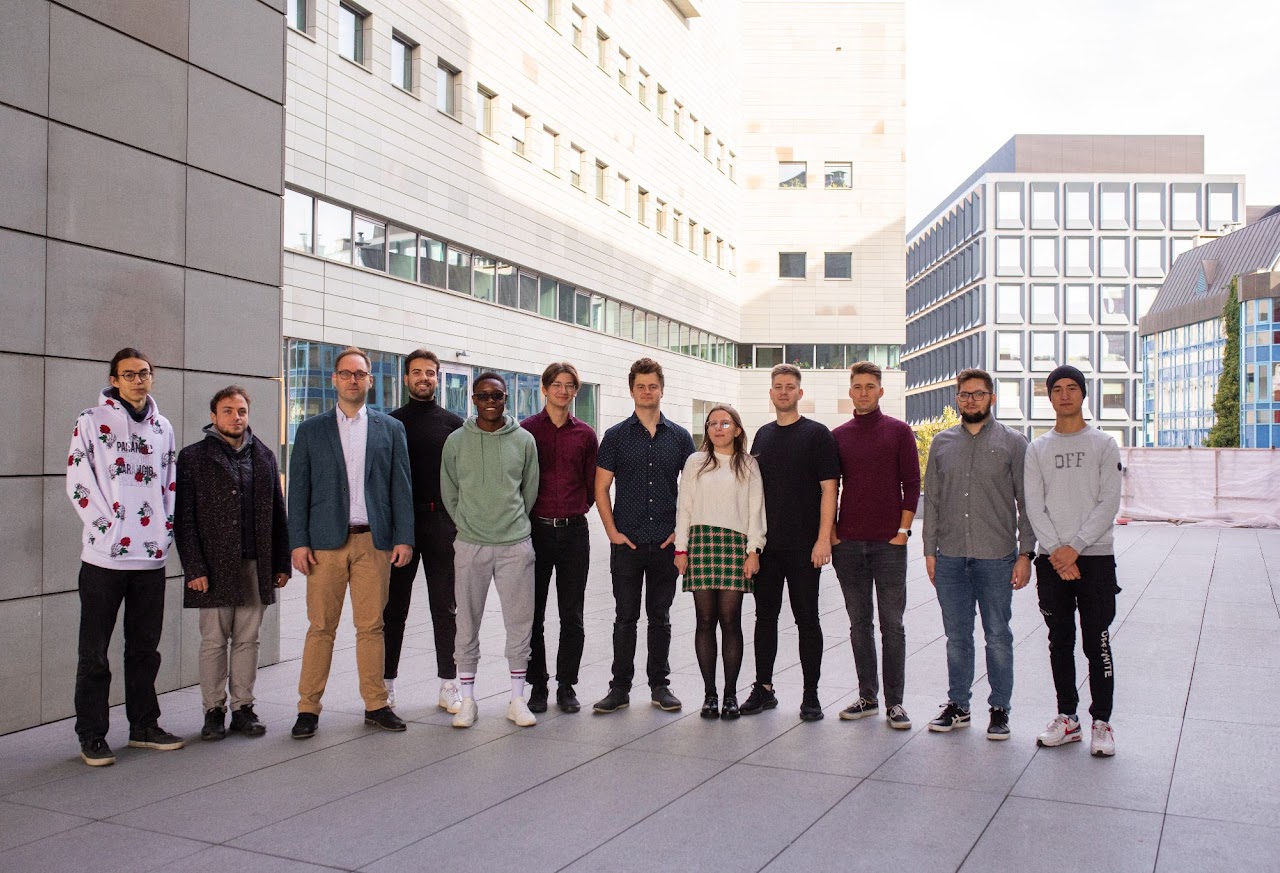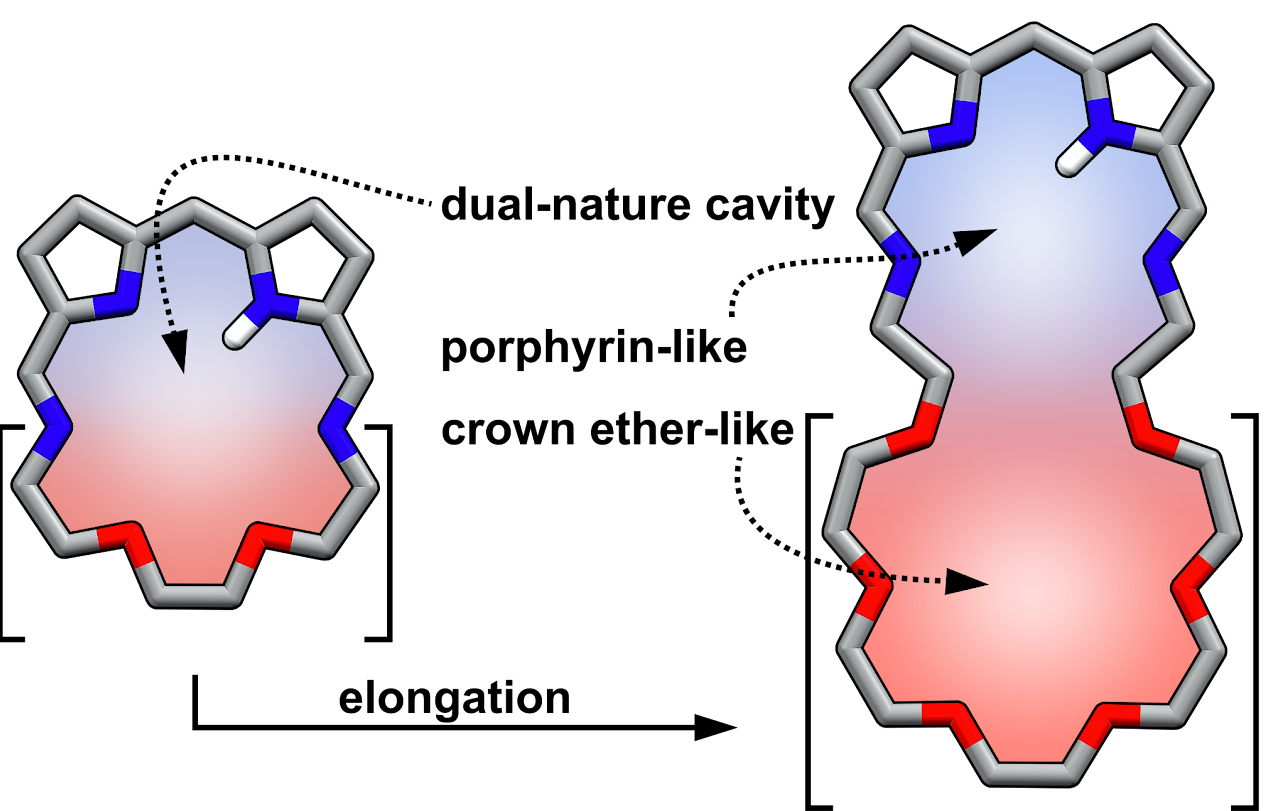
Preludium Bis for a researcher of the Faculty of Chemistry
Koronofiryny – hybrydy eterów koronowych i porfiryn stanowiące platformy makrocykliczne do konstrukcji dwu- i trójwymiarowych ligandów i receptorów molekularnych (“Crownphyrins – hybrids of crown ethers and porphyrins constituting macrocyclic platforms for the construction of two- and three-dimensional ligands and molecular receptors”) – a project by dr hab. Bartosz Szyszko, professor of the Faculty of Chemistry at the University of Wrocław, received funding from Preludium Bis programme under the supervision of National Science Centre.
This ambitious project is dedicated to obtaining new organic molecules called crownphyrins. These molecules combine structural features of two different types of molecules: crown ethers and porphyrins.
Its goal is to use the crownphyrin framework to construct new ligands, or molecules capable of binding metal cations, and receptors that can capture anions and small organic molecules.
The researchers aim to understand how hybrids of crown ethers and porphyrins interact with other substances to form coordination compounds. They also want to study how these molecules can recognize and grip certain systems, such as ions and neutral molecules.
The research covered in the project is important because the results could significantly expand the range of building blocks available to chemists to create new functional materials. The two types of structures used to build crownphyrins, namely porphyrins and crown ethers, have already been intensively studied and have many practical applications in chemistry. As prof. Bartosz Szyszko states: – Combining their functionality with the formation of crownphyrins could allow scientists to create exciting new materials with many potential applications.
The project is divided into three parts:
– the first one is devoted to the synthesis of new types of crownphyrins containing different heteroatoms in the coordination cavity and the study of the mechanisms by which these molecules bind metal cations;
– in the second part, the structures of crownphyrins are going to be modified to efficiently bind guests such as anions or neutral molecules, including those of biological interest (some of the synthesized compounds are fluorescent, meaning that they exhibit different emission properties, depending on whether their coordination cavities are empty or filled with a guest molecule);
– in the final stage of the project, the group will develop three-dimensional receptors that can bind guest molecules inside, interlocking them as if in a cage.
The researchers will use a variety of advanced research techniques to confirm the identity of the new molecules and study their properties. This approach will allow to learn about the shape and size of new molecules, as well as to understand the mechanisms of their interaction with other substances. Analytical techniques such as nuclear magnetic resonance spectroscopy and X-ray diffraction techniques will be used to gain insight into the structure and fundamental characteristics of the new systems.
– The research project is very challenging. – admits prof. Szyszko. – But the results obtained during its course could lead to new materials with exciting and valuable properties in the field of chemistry and beyond.
Achieving the ambitious scientific objectives will significantly expand the knowledge of organic receptors and ligands with potential applications in various fields of supramolecular chemistry.
Preludium Bis is a project intended to fund a single PhD, which is going to be carried out by a PhD student in prof. Bartosz Szyszko’s research group. More information about the Organic Supramolecular Chemistry Group at the University of Wrocław can be found at Szyszko Lab
In the fifth edition of the PRELUDIUM BIS competition, the National Science Centre received 229 applications for a total amount of over 134 million PLN. Forty-three projects worth nearly 26 million PLN have been selected for funding, among which are three projects by our researchers.
Apart from the project by prof. Bartosz Szyszko of the Faculty of Chemistry at the University of Wrocław other projects that received funding are:
and
„Węch doskonały: jak kultura i środowisko wpływają na odbieranie zapachów” – a project by dr hab. Piotr Krzysztof Sorokowski, professor of the Faculty of Historical and Pedagogical Sciences, University of Wrocław.
compiled by Katarzyna Górowicz-Maćkiewicz
Translated by Wiktoria Łapka (student of English Studies at the University of Wrocław) as part of the translation practice.




